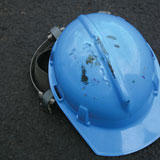Losses from torch-related fires have increased in frequency and severity since installation of torch-applied polymer-modified bitumen membrane roof systems began in the 1980s. The fire losses have been a result of various problems, including torching over combustible roof structures.
Because safety is the cornerstone of success for any roof system installation, in 1986, the Midwest Roofing Contractors Association (MRCA)—with various manufacturers; the Asphalt Roofing Manufacturers Association; and United Union of Roofers, Waterproofers and Allied Workers—developed the Certified Roofing Torch Applicator (CERTA) program to train workers in the safe application of torch-applied roof systems.
However, because of increasing incidents and losses during torching activities often by untrained roofing workers, the insurance industry asked NRCA to develop a more focused safety training program and make it available to a larger audience. MRCA agreed to let NRCA change the CERTA program. As a result, NRCA has revised the program to meet current industry needs.
A call for change
Insurance premiums for roofing contractors have climbed, and torching exposure has been one of the causes for increases. Some insurers have excluded polymer-modified bitumen roof systems from their policies, and some require roofing contractors to train their workers with the CERTA program. Additional, significant changes are being made across the U.S. Following are some examples:
- During a project in New York City, roofing workers were using torches to install a polymer-modified bitumen roof system and allegedly started a three-alarm fire that destroyed 30 apartments in Manhattan. The operator of the torch and owner of the roofing company were arrested for reckless endangerment of property. The New York City code now makes it illegal to operate, maintain or use propane with an open flame or torch on the roof of any structure unless the roof deck is noncombustible.
- This year, an officers club on an Air Force base in Florida was burned to the ground by a roofing contractor who had installed a torch-applied roof system. There had been no two-hour fire watch as prescribed by the CERTA program. The officers smelled smoke and lifted a ceiling tile, letting in oxygen and causing flames to spread swiftly throughout the structure and injure some officers. The Air Force now is adding CERTA training to all its construction contracts.
- Seattle is considering making CERTA training a requirement to obtain a permit to install torch-applied roof systems.
Altering practices
However, the key to making the industry safer is to change the behavior of roofing workers who use torches. The NRCA/MRCA CERTA program has made progress in changing the way roofing workers install torch-applied roof systems. There now are more than 600 authorized trainers who have trained about 4,500 roofing workers. The program features industry best practices created by NRCA in collaboration with the insurance industry. Some key points include:
- When installing torch-applied polymer-modified bitumen sheet products over combustible roof deck substrates, a thermal barrier should be incorporated into the roof system design and installed over the roof system.
- When installing torch-applied polymer-modified bitumen sheet products over combustible roof flashing substrates, a two-layer backer should be incorporated into the detail design and installation.
- The "torch-and-flop" method should be used on all flashings.
- A minimum two-hour fire watch, which should include checking the roof's underside and top side for smoldering (whenever possible), must be conducted by properly trained and dedicated personnel.
The future
Current anecdotal evidence from insurers indicates torch-related fires are beginning to decrease significantly. This also has been the case in Canada, where the Canadian Roofing Contractors Association adopted a similar training program in 2003.
Although the progress is encouraging, it still is important for the design segment of the industry to embrace CERTA and make it a part of its specifications to eliminate fire losses.
Leslie Kazmierowski is NRCA's insurance programs manager.

